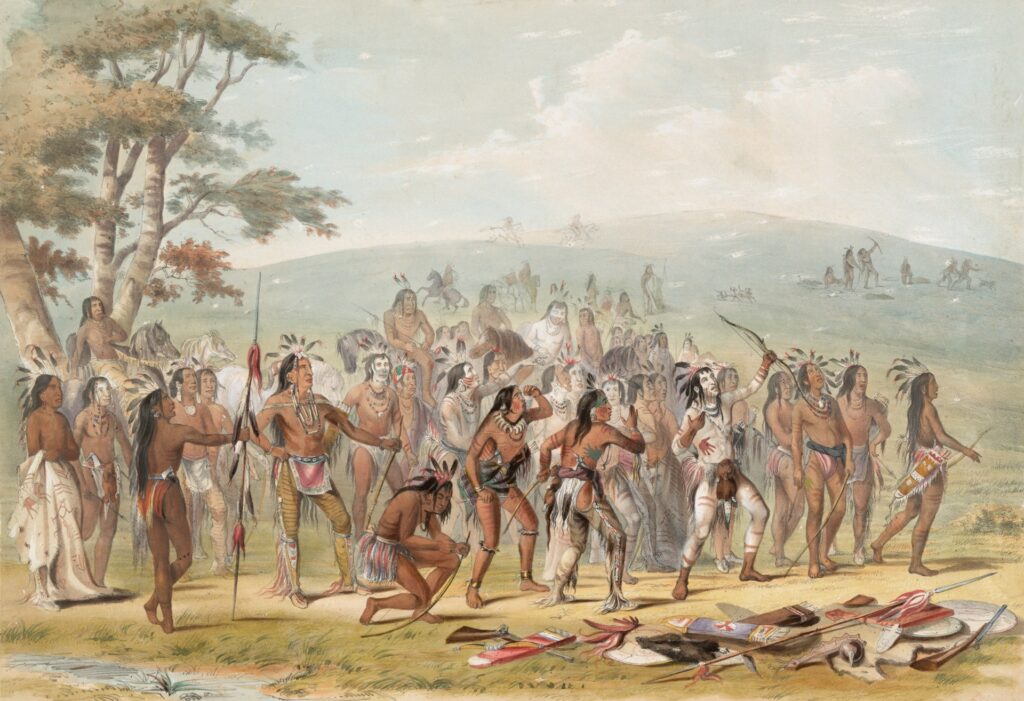This post is also available in Dutch.
Cultural evolution is like natural selection – but for ideas, skills, and stories as they move through minds rather than genes. Its footprints are visible well beyond humans. For example, humpback whales spread songs across oceans by imitating each other. Neighbouring chimpanzee troops craft toolkits that differ in length, material, and technique despite sharing the same forest patch.
What makes humans different?
Where humans diverge is not whether culture evolves but how fast and how far it can grow. It is often argued that our global dominance stems from sheer brain size. But the Neanderthals actually carried larger brains than us, yet we outlasted them. The book Sapiens attributes this success to the ability of homo-sapiens to live in large populations. Compared to Neanderthals, humans spoke richer, more structured languages, and exchanged tools and mates across great distances, ratcheting innovations ever upward. Brain volume provided the engine, but social learning, large group size, and fast communication supplied the much-needed fuel, turbocharging a feedback loop described by the Cultural Brain Hypothesis. The loop being that, big brains that communicate well lead to the emergence of complex societies, and the complex societies in turn demand bigger brains to navigate them.
Neuroscience involved
To understand how the human brain fuels cultural evolution, we can look at a few key neural features that set us apart from other species.
Firstly, a mirror‑prediction network linking motor and visual brain areas lets us translate what we see into our own muscle commands. These “mirror” neurons fire not only when we pick up an object but also when we watch someone do it with a hand or even a tool, signalling the goal, not just the motion: a wiring built for copying function.
Secondly, dopamine flowing from the ventral striatum up to the decision‑making prefrontal cortex helps judge which new ideas are worth keeping. Studies of genes like DRD4 and COMT show that people with variants that boost dopamine spikes feel social rewards and peer pressure more keenly, tagging popular cultural behaviours as clear winners.
Finally, our language network (Broca’s and Wernicke’s areas linked by the arcuate fasciculus) turns complicated know‑how into small, shareable chunks. Two tiny, human-exclusive tweaks in the FOXP2 gene fine-tune the brain wiring for precise mouth control, upgrading broad pantomime into fluent, portable speech.
These three traits in human brains, among many others, contribute to the birth of a gigantic human social network. One other thing peculiar to humans is the fact that we have an unusually long brain rewiring phase that stretches to our mid-twenties. This unusual extent of neural plasticity during development gives us extra time to absorb languages, tools, and social norms, and more importantly, to observe the changes in culture itself. In the age t of the internet, digital world, and fast transport, we are able to observe multiple waves of cultural evolution within a matter of months.
Collective Neuroscience
Major neuroscience studies still try to study single brains inside secluded scanners. However, real thinking and learning do not happen alone; they occur in groups. For instance, mainstream cognitive neuroscience still assumes complete information is transformed among humans for decision making, but in reality, people rarely exchange full internal models; instead, we lean on others’ expertise and community norms, outsourcing understanding to a “community of knowledge”. New research shows that when groups reason or build knowledge together, their neural rhythms partially synchronise, suggesting a shared cognitive state. To understand and, ultimately, guide the breathtaking speed of human cultural evolution, neuroscience must widen its lens from the solitary brain to the community of brains.
Author: Siddharth Chaturvedi
Buddy: Charlotte Sachs
Editor: Natalie Nielsen
Translation: Dirk-Jan Melssen
Editor Translation: Lucas Geelen
